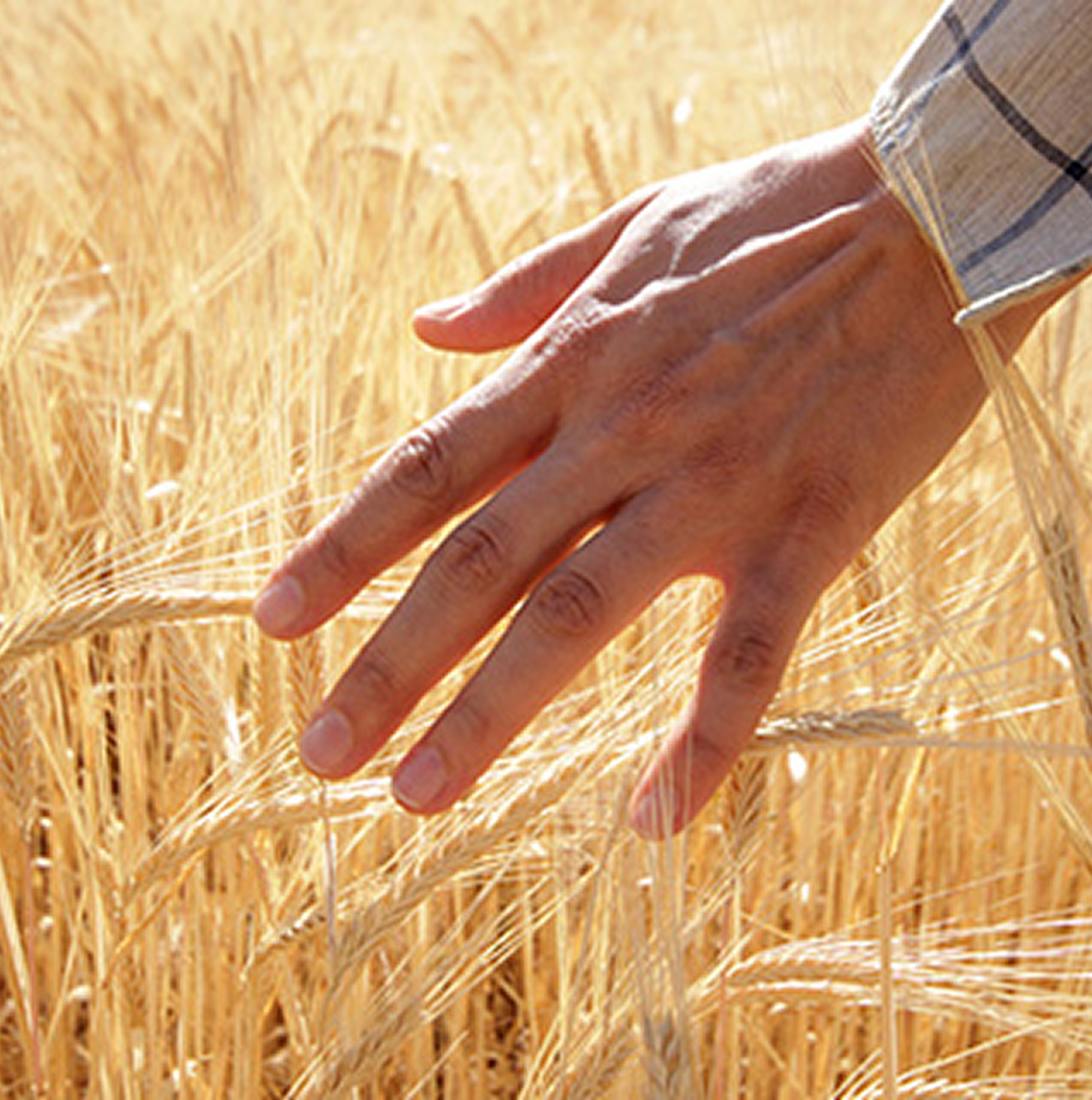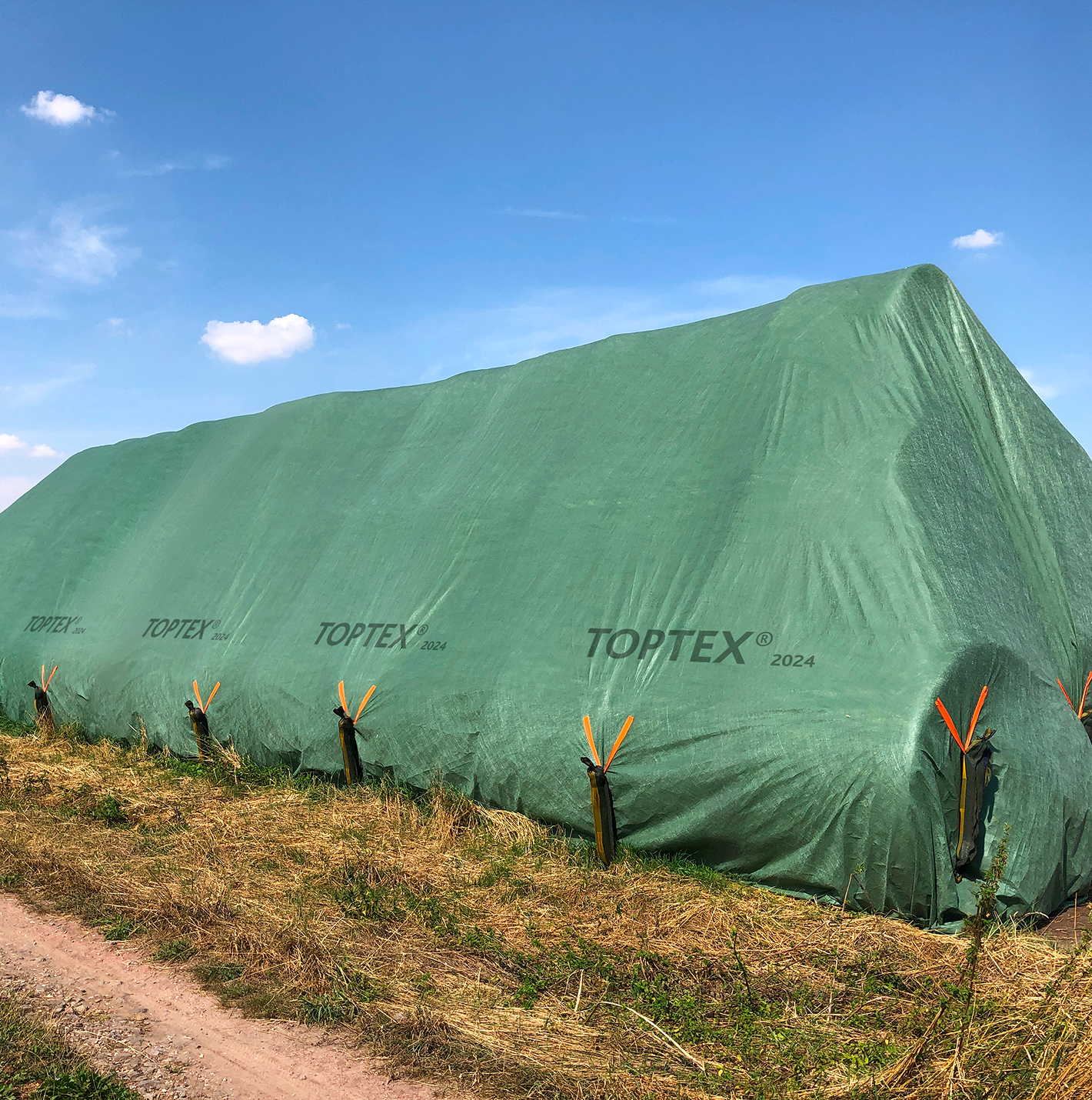Uncovered bales lose quality and increase costs
Rain, prolonged sunlight, and fluctuating humidity can quickly degrade unprotected straw and hay. Even carefully stacked bales absorb water if they have no protective layer, leading to mold growth, rotting, and a loss of nutritional value.
When that happens, farmers either deal with unusable feed or must purchase extra bales to replace the spoiled portions. Sun exposure weakens hay bales, making them crumble or dusty and hence critical or unusable for feeding. These factors not only increase operational costs and efforts but also affect animal health.
Uncovered bales lose quality and increase costs
Rain, prolonged sunlight, and fluctuating humidity can quickly degrade unprotected straw and hay. Even carefully stacked bales absorb water if they have no protective layer, leading to mold growth, rotting, and a loss of nutritional value.
When that happens, farmers either deal with unusable feed or must purchase extra bales to replace the spoiled portions. Sun exposure weakens hay bales, making them crumble or dusty and hence critical or unusable for feeding. These factors not only increase operational costs and efforts but also affect animal health.
.jpeg)
.jpeg)

.jpeg)
.jpeg)

Protect your straw and hay bales
Uncovered bales lose quality and increase costs
Rain, prolonged sunlight, and fluctuating humidity can quickly degrade unprotected straw and hay. Even carefully stacked bales absorb water if they have no protective layer, leading to mold growth, rotting, and a loss of nutritional value.
When that happens, farmers either deal with unusable feed or must purchase extra bales to replace the spoiled portions. Sun exposure weakens hay bales, making them crumble or dusty and hence critical or unusable for feeding. These factors not only increase operational costs and efforts but also affect animal health.

Straw and hay are too valuable to risk. Mold can spread quickly through a pile of bales, turning what should be a dependable feed source into a costly disposal problem.
Livestock that consumes even mildly contaminated straw or hay may experience reduced intake or digestive issues. As a result, farms incur added veterinary expenses, lost productivity, and the constant worry of whether existing feed supplies are safe enough.
Maintaining dryness preserves resources

Ensuring each bale remains clean and dry extends its useful life – even into a period of 2 years – and helps sustain overall productivity and supply or additional income in years of shortages. Stability is key in regions or times where weather patterns make every bit of feed count.
Good bale management ultimately pays for itself, providing both immediate savings and a more secure operation.
Uncovered bales lose quality and increase costs
Rain, prolonged sunlight, and fluctuating humidity can quickly degrade unprotected straw and hay. Even carefully stacked bales absorb water if they have no protective layer, leading to mold growth, rotting, and a loss of nutritional value.
When that happens, farmers either deal with unusable feed or must purchase extra bales to replace the spoiled portions. Sun exposure weakens hay bales, making them crumble or dusty and hence critical or unusable for feeding. These factors not only increase operational costs and efforts but also affect animal health.
Maintaining dryness preserves resources
Ensuring each bale remains clean and dry extends its useful life – even into a period of 2 years – and helps sustain overall productivity and supply or additional income in years of shortages. Stability is key in regions or times where weather patterns make every bit of feed count.
Good bale management ultimately pays for itself, providing both immediate savings and a more secure operation.

.jpeg)
.jpeg)

.jpeg)
.jpeg)
.jpeg)
.jpeg)
.jpeg)

How TOPTEX protects straw and hay
TOPTEX bale covers offer a durable, breathable fabric that resists rainfall and UV exposure. Unlike plastic covers that can trap moisture, TOPTEX ensures most of the water runs off while allowing humidity from inside the pile to escape. Its design creates the perfect balance to reduce mold development and maintain nutritional integrity far longer than uncovered storage. The covers are also easy to install and secure, making them suitable for large operations and smaller farms alike. Over multiple seasons, TOPTEX consistently holds up against wind, sun, and heavy rain, minimizing replacement costs.




Key benefits
Low water absorption
Most rainwater beads off its surface.
Rapid drainage
Quickly restores the breathability of the fabric.
Unmatched air exchange
Allows bales to dry easily and quickly.
Reduced spoilage
Diminishes mold growth, protecting both feed and bedding materials
Easy installation
Lightweight design simplifies covering and uncovering tasks
Proven, long-lasting, performance
Delivers reliable multi-year functionality under diverse or extreme climate conditions (often for more than 10 years)
.png)


